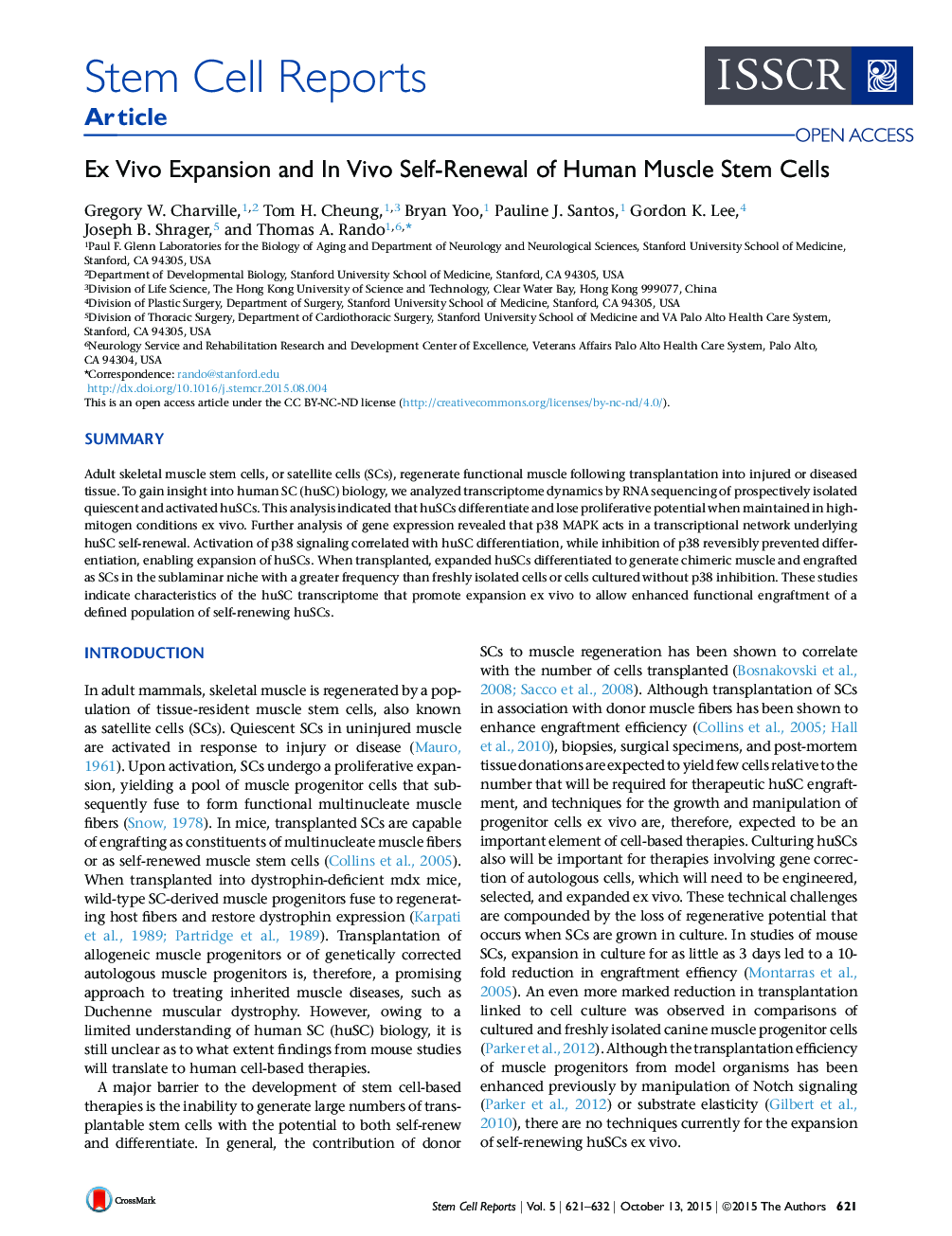| Article ID | Journal | Published Year | Pages | File Type |
|---|---|---|---|---|
| 2093428 | Stem Cell Reports | 2015 | 12 Pages |
•Prospective isolation of highly pure huSCs from diverse muscles•RNA sequencing resource for studying the huSC transcriptome•Core transcription factor regulatory network of huSC differentiation•Expanded huSCs that are genetically manipulable and self-renew in vivo
SummaryAdult skeletal muscle stem cells, or satellite cells (SCs), regenerate functional muscle following transplantation into injured or diseased tissue. To gain insight into human SC (huSC) biology, we analyzed transcriptome dynamics by RNA sequencing of prospectively isolated quiescent and activated huSCs. This analysis indicated that huSCs differentiate and lose proliferative potential when maintained in high-mitogen conditions ex vivo. Further analysis of gene expression revealed that p38 MAPK acts in a transcriptional network underlying huSC self-renewal. Activation of p38 signaling correlated with huSC differentiation, while inhibition of p38 reversibly prevented differentiation, enabling expansion of huSCs. When transplanted, expanded huSCs differentiated to generate chimeric muscle and engrafted as SCs in the sublaminar niche with a greater frequency than freshly isolated cells or cells cultured without p38 inhibition. These studies indicate characteristics of the huSC transcriptome that promote expansion ex vivo to allow enhanced functional engraftment of a defined population of self-renewing huSCs.
Graphical AbstractFigure optionsDownload full-size imageDownload as PowerPoint slide
